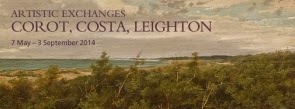Purpose and process: British and French printmaking 1600-1900

A small exhibition at the Courtauld Gallery showing some of their print collections from France and Britain in the 17th, 18th and 19th centuries. There were some nice works but I found the works did not hang together as a group very well. It was used as an opportunity to talk about prints being a way of producing multiple images and new developments such as lithographs which made it easier to put pictures in books. I was interested to see a Turner print for his Liber Studiorum which he had etched himself as I had recently done a morning course on Turner. There was also a nice satirical print by Sandy on the subject of Hogarth’s artistic theories. My favourite was a delightful print by Jacques Stella of a vendor of tripe for cats! It shows the salesman cutting off sections of the tripe, happy cats running off with pieces and a jealous dog looking on.






























